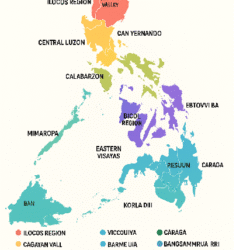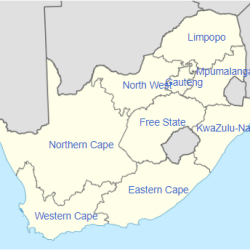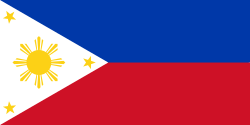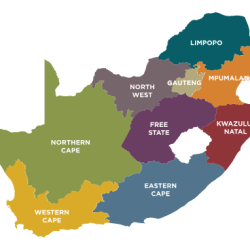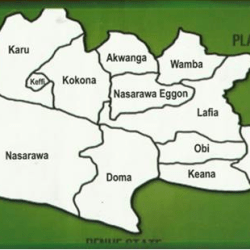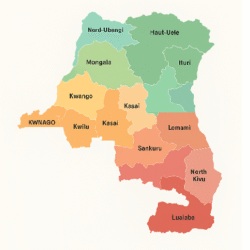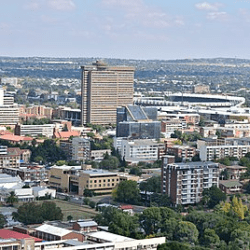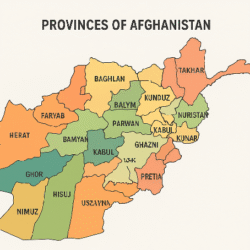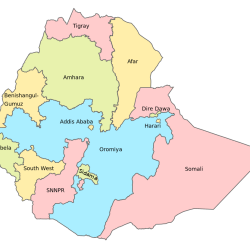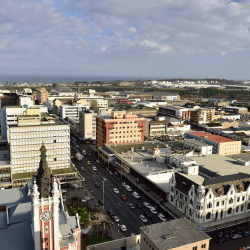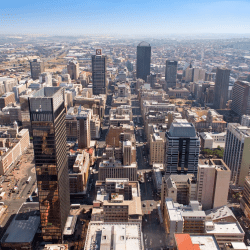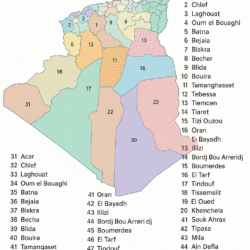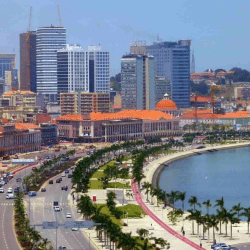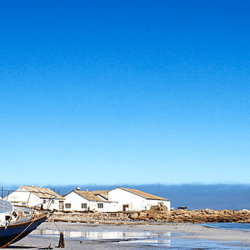Argentina is a federal republic divided into 23 provinces (provincias) and 1 autonomous city (Ciudad Autónoma de Buenos Aires), which is the national capital. Each province has its own constitution, legislature, and government, giving them significant autonomy within the federal system.
📊 Quick Facts
- Total provinces: 23
- Autonomous city: 1 (Buenos Aires)
- Largest province by area: Buenos Aires Province (307,571 km²)
- Smallest province by area: Tierra del Fuego (21,263 km²)
- Most populated province: Buenos Aires Province (17.5 million+)
- Least populated province: Tierra del Fuego (~190,000)
🗺️ Regional Grouping of Provinces
Argentina’s provinces are often grouped by geographical regions:
1. Northwest (NOA)
- Jujuy
- Salta
- Tucumán
- Santiago del Estero
- Catamarca
- La Rioja
2. Northeast (NEA)
- Misiones
- Corrientes
- Chaco
- Formosa
3. Cuyo (Wine Country)
- Mendoza
- San Juan
- San Luis
4. Pampas (Agricultural Heartland)
- Buenos Aires Province
- Córdoba
- Santa Fe
- Entre Ríos
- La Pampa
5. Patagonia (Southern Argentina)
- Río Negro
- Neuquén
- Chubut
- Santa Cruz
- Tierra del Fuego, Antártida e Islas del Atlántico Sur
🏙️ The Autonomous City of Buenos Aires
- Known as CABA (Ciudad Autónoma de Buenos Aires)
- Serves as the federal capital
- Not part of Buenos Aires Province
- Divided into 15 communes
🏛️ Government Structure
- Each province has:
- Its own governor
- A provincial legislature
- A provincial constitution
- Subdivisions:
- Buenos Aires Province → 135 partidos
- Other provinces → 378 departments
- Buenos Aires City → 15 communes
Full list of the 23 provinces of Argentina plus the Autonomous City of Buenos Aires
🗺️ The Provinces of Argentina are:
- Buenos Aires Province
- Catamarca
- Chaco
- Chubut
- Córdoba
- Corrientes
- Entre Ríos
- Formosa
- Jujuy
- La Pampa
- La Rioja
- Mendoza
- Misiones
- Neuquén
- Río Negro
- Salta
- San Juan
- San Luis
- Santa Cruz
- Santa Fe
- Santiago del Estero
- Tierra del Fuego, Antártida e Islas del Atlántico Sur
- Tucumán
🏙️ Autonomous City
- Ciudad Autónoma de Buenos Aires (CABA) – the federal capital of Argentina
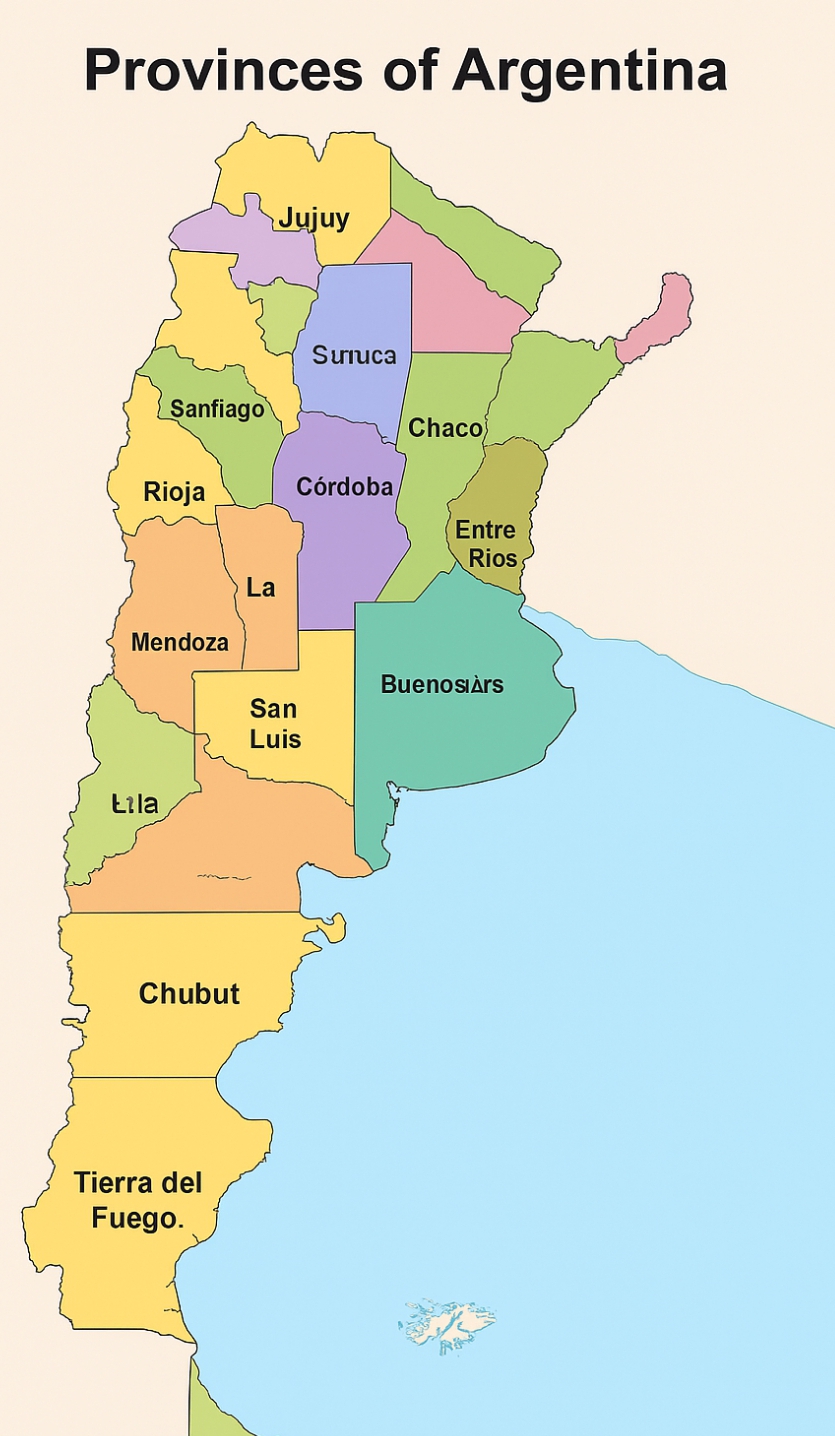
🌎 Argentina
🏛️ General Information
- Official Name: Argentine Republic (República Argentina)
- Location: Southern part of South America
- Borders:
- West → Chile
- North → Bolivia & Paraguay
- Northeast → Brazil
- East → Uruguay & the Atlantic Ocean
- South → Drake Passage (towards Antarctica)
- Area: ~2.78 million km² (8th largest country in the world, 2nd largest in South America after Brazil)
- Population: ~46 million (2025 est.)
- Capital City: Buenos Aires (Autonomous City)
🗺️ Political Division
- 23 provinces (provincias)
- 1 autonomous city (Buenos Aires, the federal capital)
- Provinces have their own constitutions and governments under a federal system.
🌍 Geographical Regions
Argentina is divided into five main regions:
- Northwest (NOA) – Jujuy, Salta, Tucumán, Catamarca, La Rioja, Santiago del Estero
- Northeast (NEA) – Misiones, Corrientes, Chaco, Formosa
- Cuyo – Mendoza, San Juan, San Luis (famous for wine production)
- Pampas – Buenos Aires Province, Santa Fe, Córdoba, Entre Ríos, La Pampa (Argentina’s agricultural heartland)
- Patagonia – Río Negro, Neuquén, Chubut, Santa Cruz, Tierra del Fuego (known for oil, gas, glaciers, and sheep farming)
📊 Economy
- Currency: Argentine Peso (ARS)
- Main Industries: Agriculture (soybeans, beef, wheat, corn, wine), energy (oil, gas, lithium), manufacturing, and services.
- Exports: Soybeans, corn, beef, wine, lithium, petroleum.
- Challenges: Inflation, debt, and periodic financial crises.
🧑🤝🧑 Culture & Society
- Language: Spanish (official)
- Ethnic Composition: Predominantly European descent (Italian, Spanish), with indigenous and mestizo minorities.
- Religion: Mostly Roman Catholic, but secularism is growing.
- National Sport: Football (soccer) ⚽ (home of legends like Diego Maradona & Lionel Messi).
- Traditions: Tango music & dance, mate (herbal tea), asados (barbecues).
🏔️ Geography & Climate
- Variety of Landscapes: Pampas grasslands, Andes Mountains, Patagonian steppe, subtropical forests, glaciers, and deserts.
- Highest Point: Aconcagua (6,960 m) – tallest peak in the Americas.
- Climate: Ranges from subtropical in the north to subpolar in the south.
📌 Key Highlights
- 8th largest country in the world.
- Rich in natural resources (oil, gas, lithium, fertile land).
- Globally known for football, tango, wine, and beef.
- Holds territorial claims over the Falkland Islands (Islas Malvinas), South Georgia & South Sandwich Islands, and part of Antarctica.
